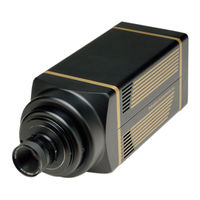Princeton Instruments PI-MAX2 System Manuals
Manuals and User Guides for Princeton Instruments PI-MAX2 System. We have 1 Princeton Instruments PI-MAX2 System manual available for free PDF download: Manual
Princeton Instruments PI-MAX2 System Manual (238 pages)
Brand: Princeton Instruments
|
Category: Security Camera
|
Size: 6 MB
Table of Contents
-
Attention
15 -
-
Precautions22
-
Repairs23
-
-
-
Introduction33
-
-
Ventilation34
-
Power35
-
-
-
Introduction47
-
-
Setup Menu49
-
Pulser50
-
-
Focusing52
-
-
-
Introduction53
-
Exposure58
-
-
Digitization67
-
-
-
Introduction73
-
Cabling73
-
Timing Modes74
-
-
-
Introduction81
-
Timing Mode83
-
Fast Gating83
-
MCP Gating88
-
-
Introduction92
-
-
-
-
Introduction107
-
-
Alarm108
-
Timing Modes109
-
Fast Gating113
-
MCP Gating117
-
-
-
Introduction121
-
Masking121
-
-
Free Run121
-
Single Trigger122
-
Multiple Trigger122
-
-
Array Readout123
-
PTG Burst Mode124
-
-
-
Introduction129
-
Requirements129
-
Timing Modes130
-
Setup132
-
Operation132
-
Tips and Tricks134
-
-
-
Introduction135
-
Signal Delay135
-
Lasers138
-
Triggered Lasers139
-
Jitter139
-
Lens Performance139
-
Throughput140
-
Resolution140
-
Depth of Field140
-
-
Baseline Signal140
-
Temperature Lock141
-
-
-
Introduction143
-
Operation146
-
Imaging Hints147
-
Fluorescence147
-
-
-
Introduction153
-
PI-MAX Camera153
-
Interface Card161
-
Pulser161
-
Spectrograph162
-
Cables162
-
User Manuals164
-
-
-
Introduction165
-
-
-
General183
-
Computer185
-
Controller186
-
Internal Pulser188
-
-
-
Pi-Max/Pi-Max2189
-
-
-
Chromex 250 IS208
-
Isa Hr 320209
-
Isa Hr 640210
-
Spex 270M211
-
Spex 500M212
-
SPEX Triplemate213
-
-
Introduction215
-
-
Backfilling216
-
-
-
Limited Warranty229
-
-
Index
233
Advertisement
Advertisement
Related Products
- Princeton Instruments PI-MAX System
- Princeton Instruments PI-MAX4
- Princeton Instruments ProEM+ EMCCD
- Princeton Instruments ProEM+:512B
- Princeton Instruments ProEM+:512BK
- Princeton Instruments ProEM+:1024B
- Princeton Instruments PhotonMAX System
- Princeton Instruments Roper Scientific PG-200
- Princeton Instruments PIXIS System
- Princeton Instruments PI-MAX 3 System
